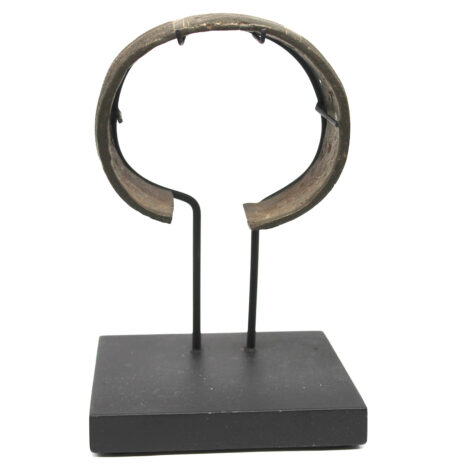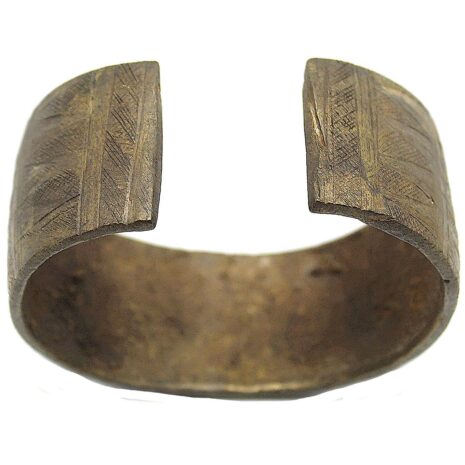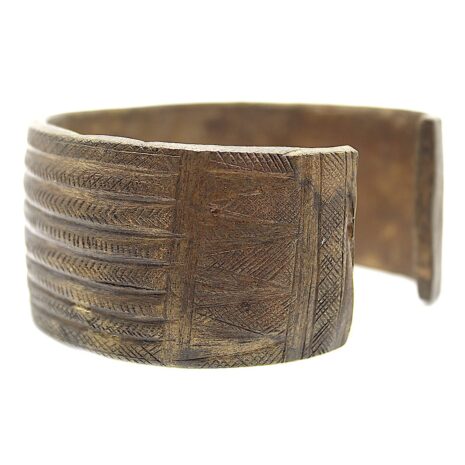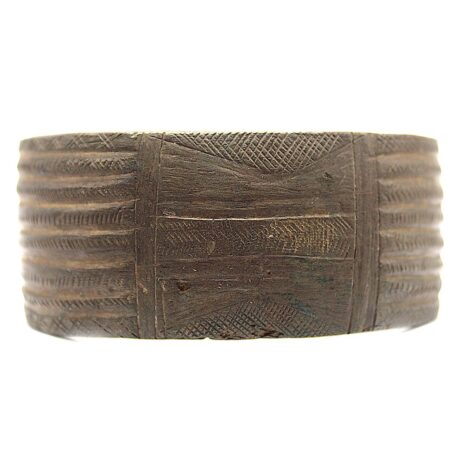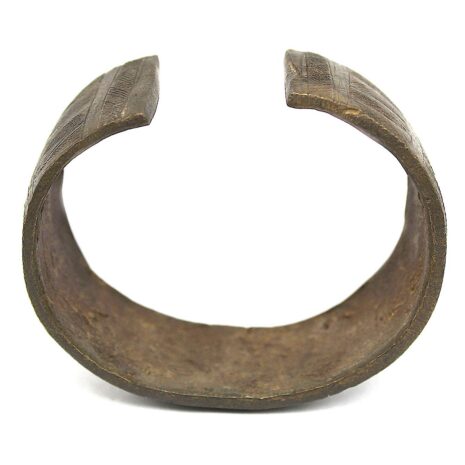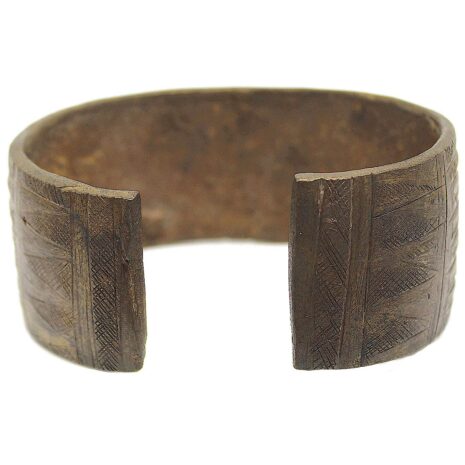Antique Kota Manilla Currency/Slave Bracelet, West Africa (3166)
Original price was: $115.00.$90.00Current price is: $90.00.
H: 2.875” W: 3.25” Width: 1.5” | FREE SHIPPING WITHIN CONTINENTAL U.S.
This antique manilla is made by the Kota in the northeastern region of Gabon and Congo. A thin wide C-shaped bracelet with an elaborate five section design, each section has unique designs with long striations, grooved crosshatches, long triangles and angled designs. In very good condition with minor losses, pitting and scratches, its rough surface inside is consistent with its age and use and comes with a wood and metal stand.
Description
The Kota are a fairly small tribe in Gabon, Africa with strong ties to France. African metalwork bracelets were locally made and used as currency, medium of exchange for trade or barter, purchase land, livestock and other goods and services.They also paid for significant life events such as births, coming of age, marriages, and burials, and display their status or social position. Each region fabricated its own metalwork varieties and styles. Most Kota manillas were typically horseshoe-shaped were often decorated with incised designs with added pieces of metal in various shapes to the body or at open ends. Ranging in size from thin delicate shapes like this to heavy massive pieces, designs included deeply carved lines forming parallel ridges, stamped or incised geometric forms and other motifs. In the 15th century, recognizing the importance of copper bracelets and leg bands as displays of wealth and as currency in West Africa, European merchants from England, Portugal, France and Holland fabricated manillas to use as slave trade currency. Manilla production decreased in the 19th century as the slave trade diminished. In 1948, England, the largest producer of manillas, collected, confiscated and melted down African manillas into reusable metals.
A thin wide C-shaped bracelet with an elaborate five section design, each section has unique designs with long striations, grooved crosshatches, long triangles and angled designs. In very good condition with minor losses, pitting and scratches, its rough surface inside is consistent with its age and use and comes with a wood and metal stand.
Click here for Blog Manillas: Former African Trade Currency.
Additional information
| Place of Origin | Africa |
|---|---|
| Period | Antique (1200-1920) |
| Date | 19th Century |
| Materials and Technique | Bronze/brass/copper alloy |
| Dimensions (inches) | H: 2.875" W: 3.25" Thick: 1.5" |
| Dimensions (metric) | H: 6.99 cm W: 8.25 cm |
| Weight | 7.2 oz |
| Condition | Very good, see description |
| Item Number | 3166-YLR |
| Shipping Box Size |

